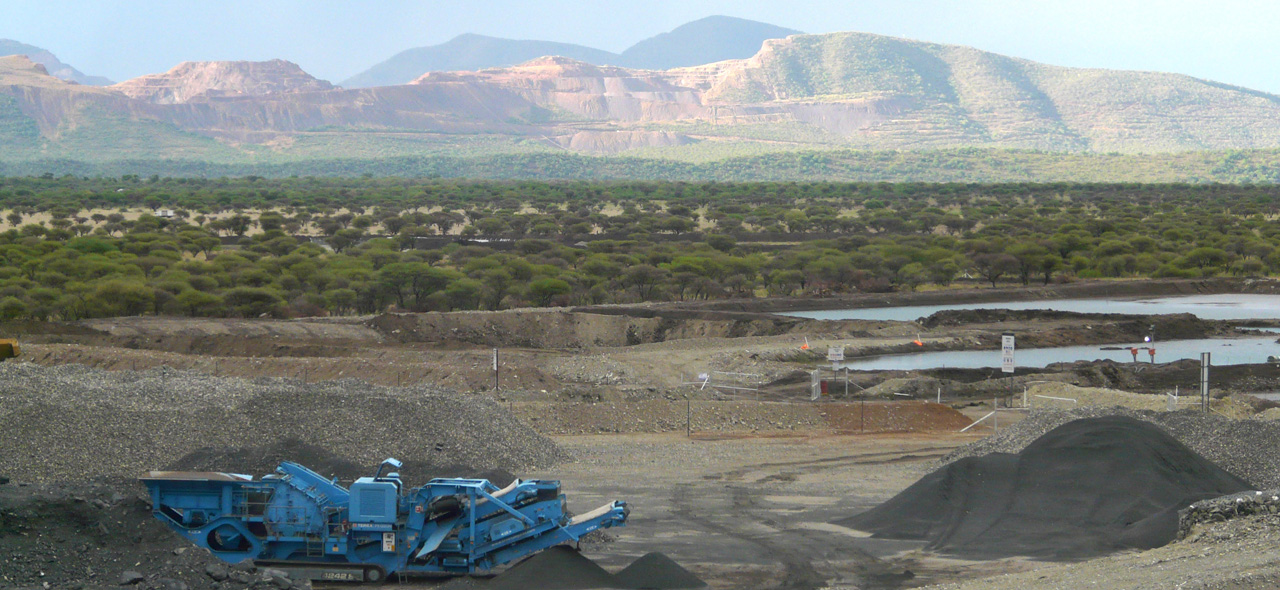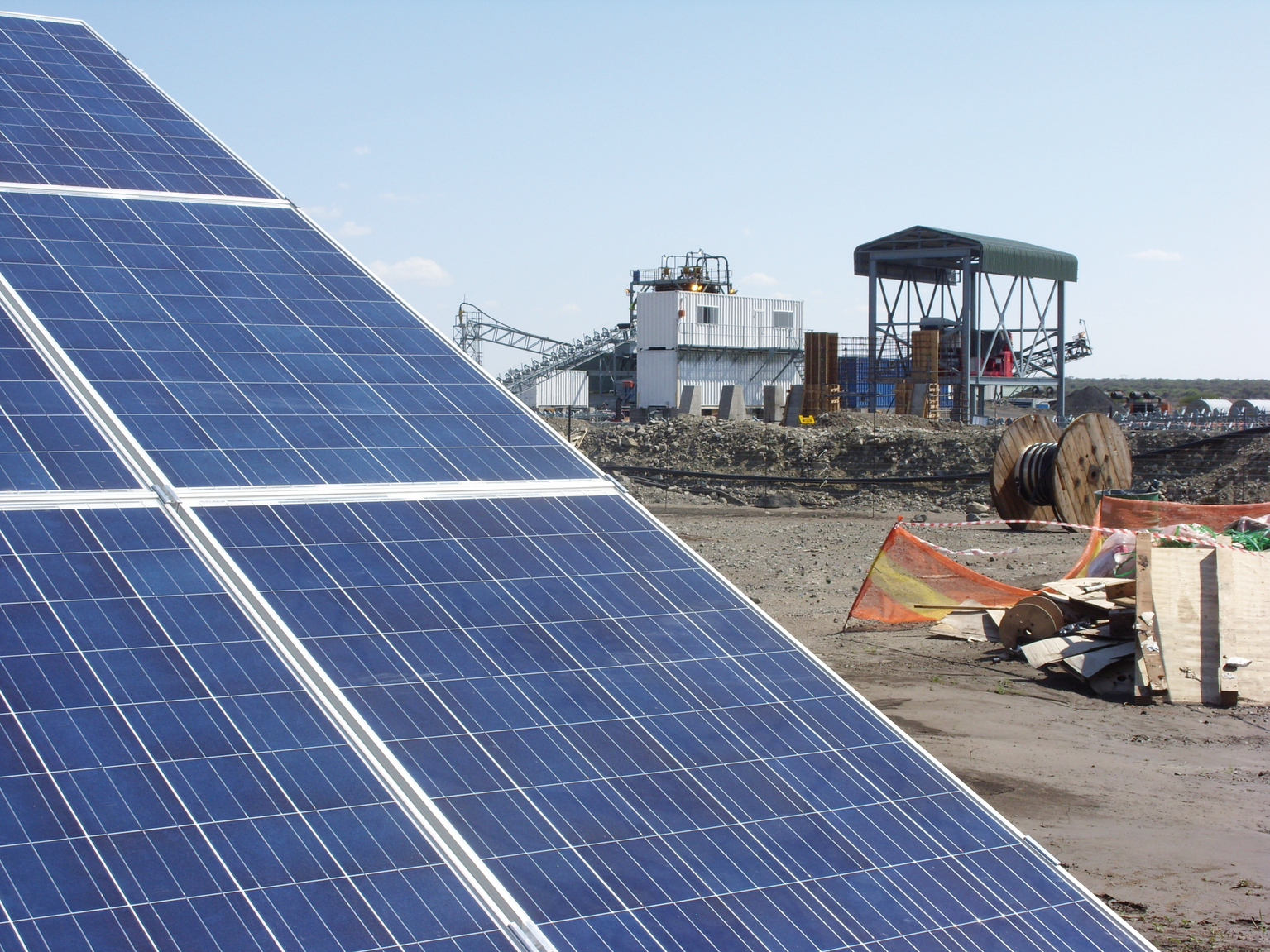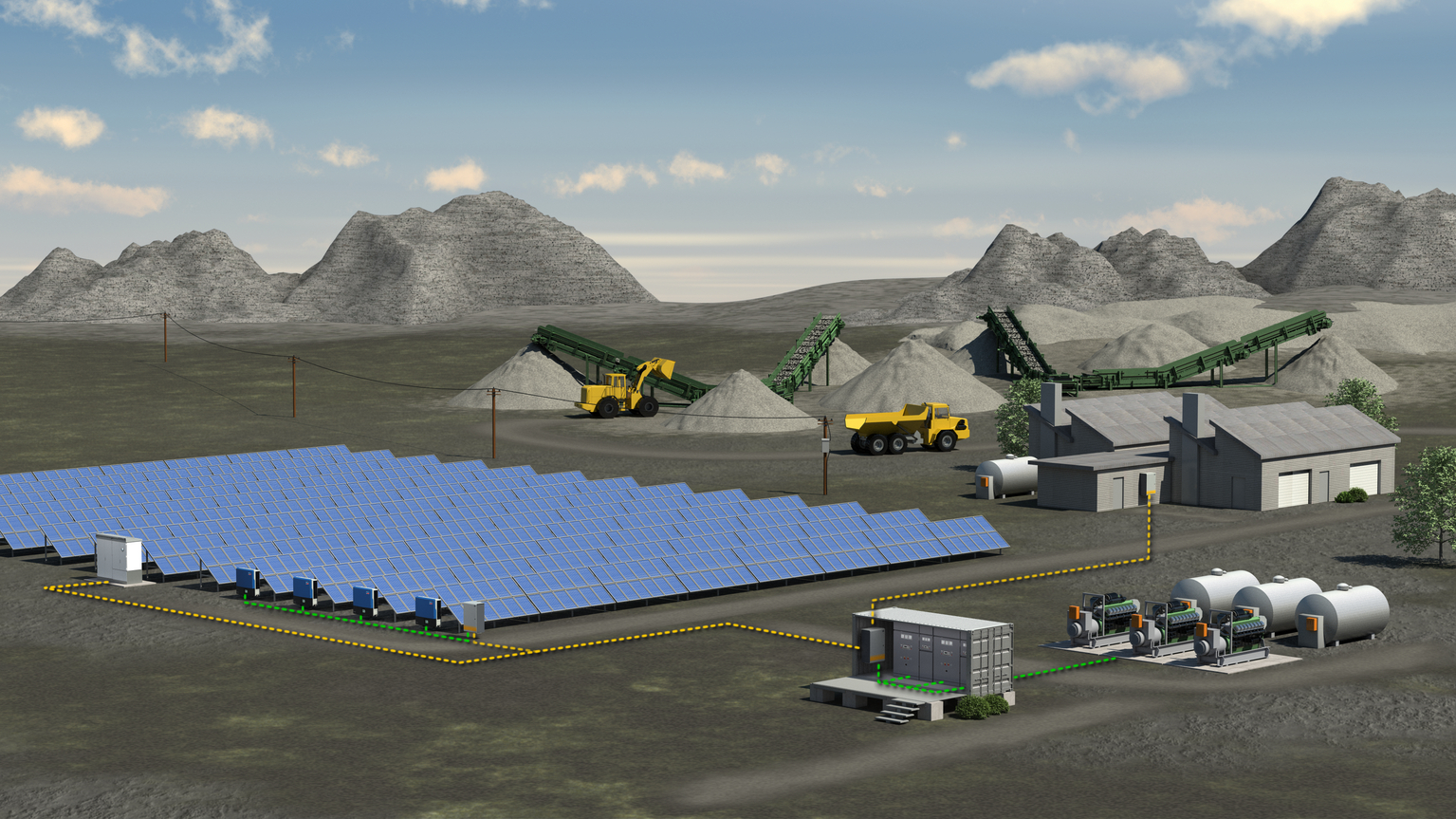Modernizing the Mining Industry with PV-Diesel Hybrid Systems

With the commissioning of the mining industry’s first PV-diesel hybrid system, located at Cronimet Mining AG’s chrome mine in South Africa, more companies within this sector are accepting solar as a secure, reliable energy source for remote locations. Tristan Kreagar, manager of Hybrid Energy Solutions for SMA America, was recently interviewed by the Canadian Clean Energy Conferences for the first Renewable Energy and Mining Summit in Toronto, Canada to discuss the future of solar and mining in North America.
“Not only does the supplemental solar power significantly reduce fuel consumption by diesel generators, but operational expenditures for a PV plant are very low, with four- to five-year payback periods attainable in sunny regions. Additionally, rising CO2 emissions in this sector are accelerating the need for green power sources in the overall power portfolio of mining companies. PV-diesel hybrid systems are perfectly suited to meet all of these needs,” explains Kreager.

Besides the Cronimet project in South Africa, SMA has contributed to remote solar systems in India, Australia, Africa, and the Pacific Islands.
Obtaining a Stable Grid in Remote Locations
Grid stability is extremely important in remote areas, which usually lack advanced infrastructure. Because system stability is the highest priority, mining executives are often concerned with how grid quality is affected by PV power, which can be variable in nature. The most important thing to secure a smooth and reliable power supply is intelligent communication between the PV plant and the gensets.
SMA Fuel Save Solution
The SMA Fuel Save Solution addresses this challenge by combining the need for power at the load site with the requirements of a smooth genset operation. On this basis, optimum fuel saving is achieved as follows: The genset system sets up the grid with a certain frequency and voltage and transmits key parameters, such as minimum genset loading and available spinning reserve, to the SMA Fuel Save Controller.
Accounting for these pre-requirements and by measuring the load real-time, the SMA Fuel Save Controller analyzes the optimum set point for feeding in PV power. This set point is transmitted to the SMA inverters, which regulate the PV power accordingly. In order to guarantee safe and reliable operation, the inverters perfectly synchronize with the diesel grid. Even events such as significant load steps or shading due to clouds can be seamlessly managed by the hybrid system.
How much solar energy (versus diesel) can a hybrid solution supply?
Without any intelligent communication, typically 15 to 20 percent PV capacity can be added to a genset (i.e. 200 kW PV power in addition to 1 MW genset power). However, with intelligent communication via the SMA Fuel Save Controller, this PV penetration level can be increased by up to 60 percent. However, we need to separate power and energy, talking about kW as well as about kWh. Depending on the load profile, a share of PV energy can be achieved in the range of 15 to 25 percent annually in sunny regions. This would directly translate into a 15 to 25 percent fuel saving.
The Future of Solar-Diesel Hybrid Systems
Because “mining” and “remote” correlate in most regions of the world, the market for renewable energy in the mining industry is expected to grow by double-digit numbers, with overall annual market potential in the multi-MW range. Once the first large-scale solar-diesel hybrid installations (such as the Cronimet system) have created reliable operational data highlighting real-life fuel savings, more and more projects will be put into place.
Want more information? Read the article – Smooth and Reliable Hybrid Solutions: Addressing Mining’s Energy Challenge.


Dear Mr. Kaeger,
Would you please get in contact with me or get someone of your US office contact me.
Best regards,
Volkmar Kunerth